
Making regular McDonald’s french fries at home is one of those cooking tasks that seems… a little absurd. You can go into any McDonald’s in the world and get an order of fries for $2 to $3 in less than a minute. They’ll usually be piping hot, perfectly seasoned, and pretty goddamn delicious.
Why try to recreate what the Golden Arches never screws up?
Here’s why: The McDonald’s french fries we get today aren’t quite as delicious as they used to be, thanks to a massive change in the recipe in 1990 — a once little-known food fact that has become (relatively) common knowledge. Back in 2017, Malcolm Gladwell took on the issue of McDonald’s changing up their fry recipe on his podcast, Revisionist History. The author pinned everything to a pivot the Golden Arches made on July 23, 1990, when they stopped using beef tallow in their fryers. He asserted that the fries pre-1990 didn’t just taste better in our nostalgia-hazed minds, they were better.
The logic holds up. French fries fried in duck or beef fat are always more deeply flavored and generally tastier than those dipped in corn, canola, or veggie oils. The current iteration at Mickey D’s are treated to have “beef essence” through the addition of wheat and milk extracts, but c’mon, that’s no substitute. Sure, they still rule, but now each bite begs the question: Could these be even better?
To answer that question, I tried to recreate the classic McDonald’s french fries at home and then compared them with some fresh fries from a local McDonald’s down the street. Besides the beef tallow, I followed the steps that McDonald’s uses to make their fries today — blanching them in a sugar/vinegar brine, pre-frying, freezing, and re-frying the potatoes before seasoning them.
What You’ll Need in the Kitchen:
- Kitchen knife
- Cutting board
- 2 large, heavy-bottomed pots
- Slotted spoon
- Baking sheet
- Large bowl
- Paper towels
- Container for freezing (Ziplock bag works too)
- Thermometer
Classic McDonald’s French Fries
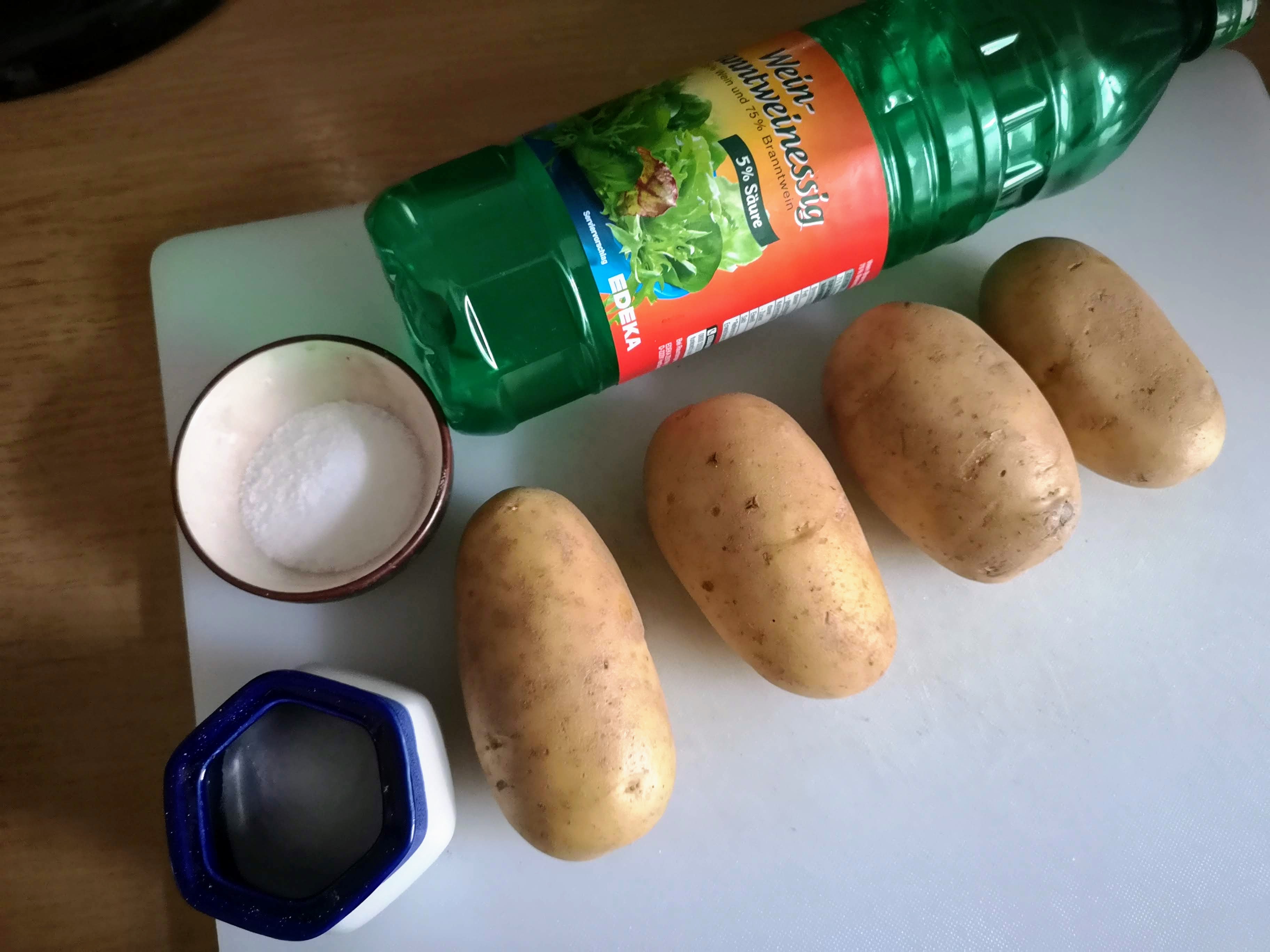
Ingredients:
- 3 Shepody potatoes
- 1/2 cup white sugar
- 1/2 cup white vinegar
- 2-lbs. beef tallow
- Salt
- Water
McDonald’s uses a lot of ingredients to recreate the beef tallow beef essence lost by cooking their fries in vegetable oils. I’m skipping all those additives and sticking with the barebones recipe of a sugar and vinegar brine to blanch, an initial fry, freezing, and second fry. I’m also just using Shepody potatoes, which is one of four potatoes McDonald’s uses for their fries. I didn’t have the time during a lockdown to track down Ranger Russets, Umatilla Russets, and Russet Burbanks.
Shepody potatoes are perfectly fine for making fries at home anyway.
The biggest change-up here is, obviously, that I’m using real-deal beef tallow from Belgium. Why? Because let’s face it, if there’s any culture that knows its way around a good fry right now, it’s Belgium. The cones of frites you can get on pretty much every other street corner in that small country are arguably the best in the world. And that comes down to the beef tallow they’re fried in.
Step 1:
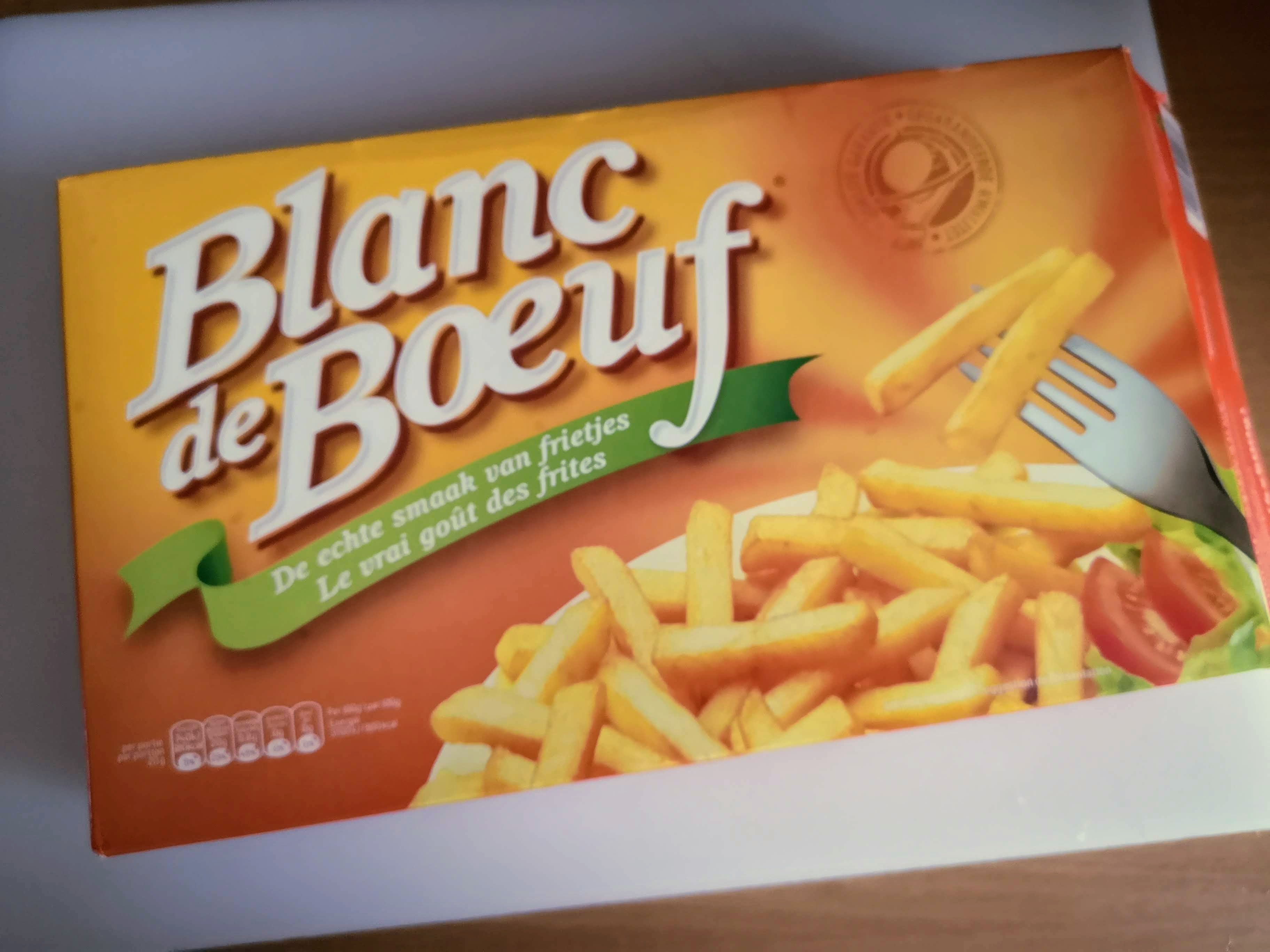
First, I get two heavy-bottomed pots on the stove. In one, I’ve added two pounds of beef tallow. I turn the heat on low to allow the tallow to melt slowly. You want it to become a liquid before you turn up the heat for frying.
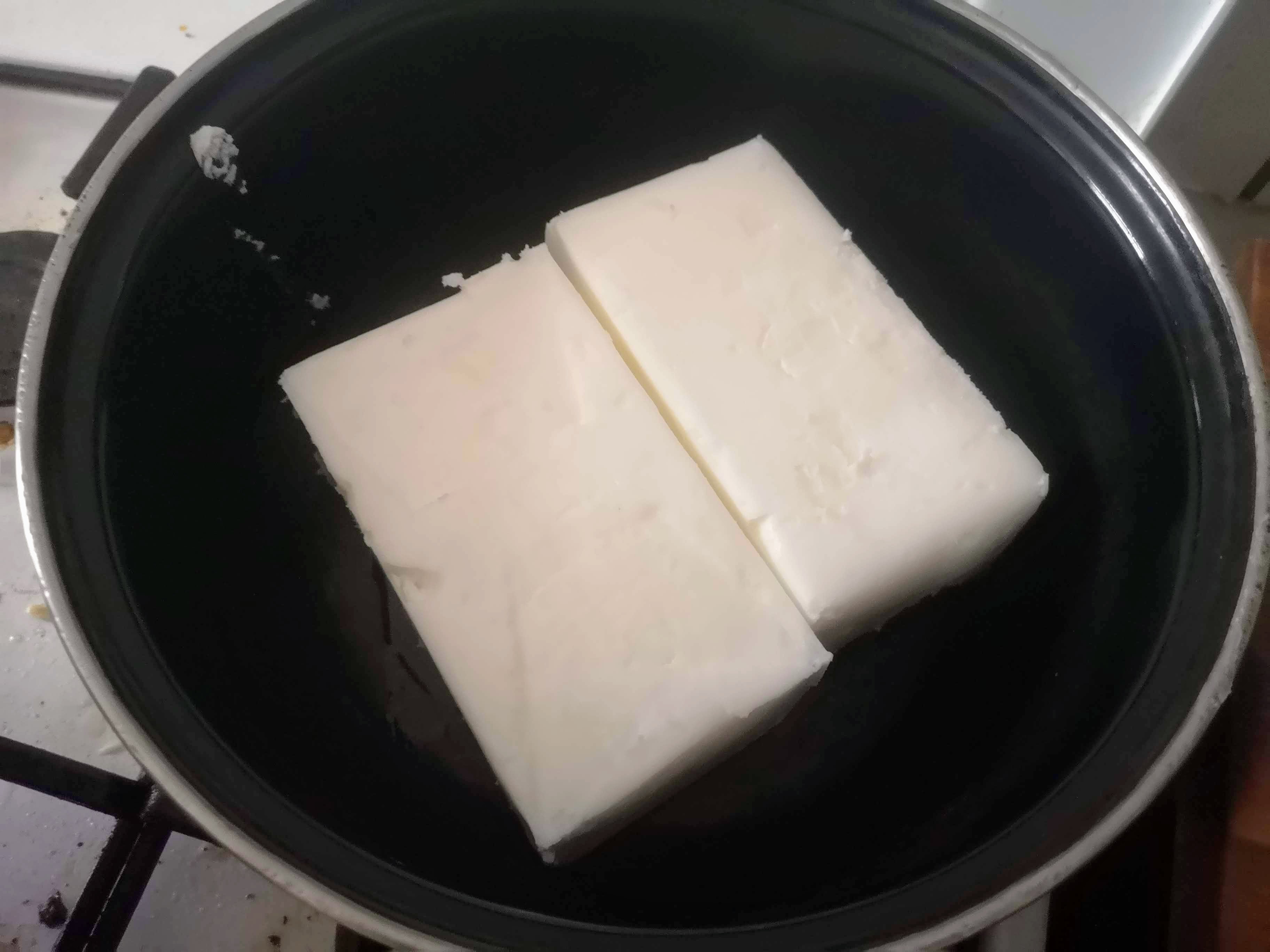
In the other pot, I add about half a gallon of tap water and a half-cup each of white sugar and white vinegar. I put that on high to bring it up to just under a boil and completely dissolve the sugar.
While the fat is melting and the water is warming, I start processing my potatoes. McDonald’s fries are peeled in a huge machine. I like a peel on my fries, so I leave it on. It also saves time.
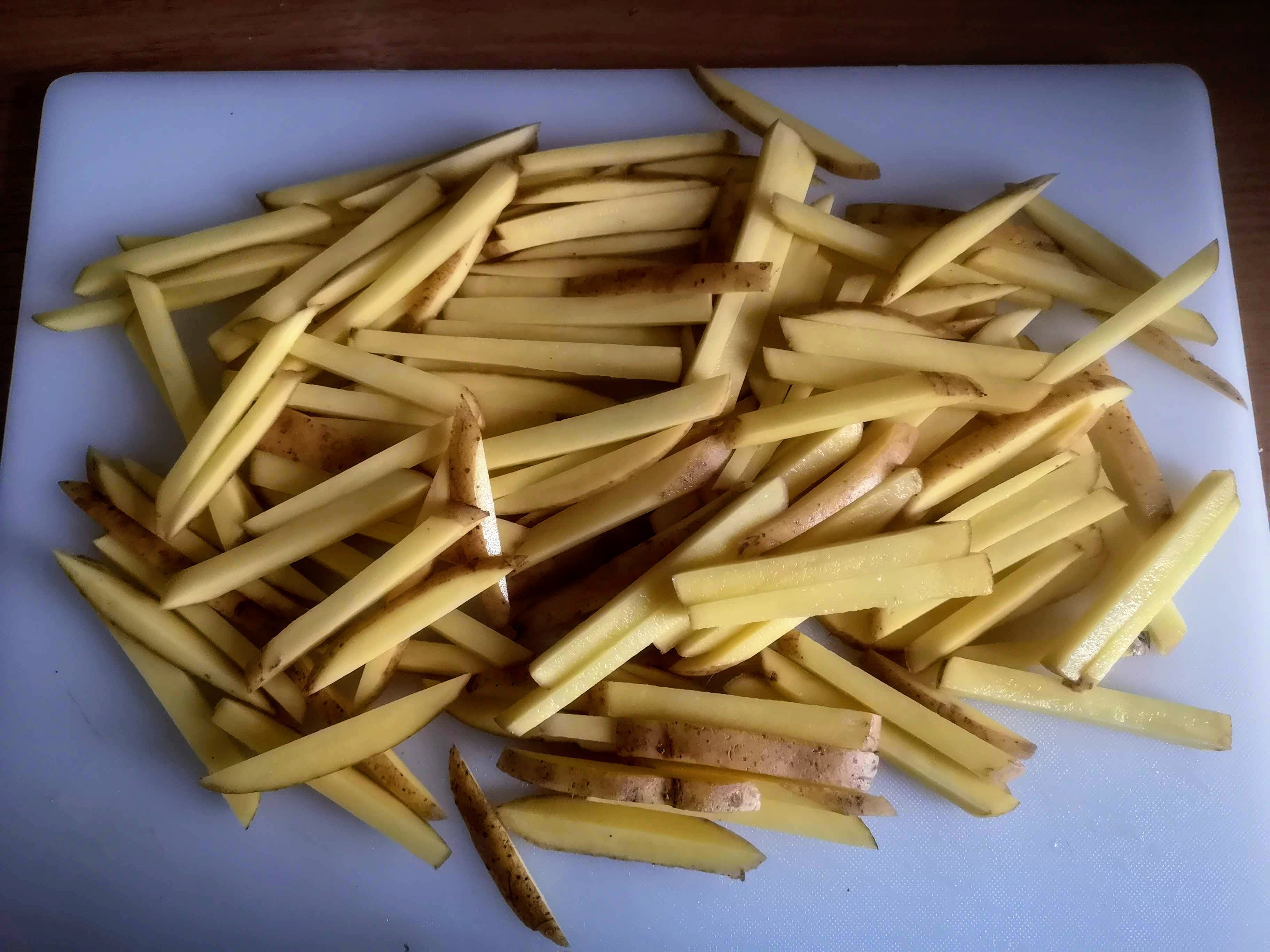
I then use a kitchen knife to cut the potato length-wise into oblong disks that are just under one-quarter-inch thick. I then julienne those into long matchsticks. I make sure to cut them a little bigger than I want, as they’ll shrink as they cook.
The cut potatoes go straight into the warm water. I bring the water just to boil. As soon as that happens, I use a slotted spoon to transfer the potatoes to a towel-lined cutting board.
I then use another towel to dry the potatoes by pressing down on them to extract as much moisture as I can. You want to get them as dry as possible, without mashing or breaking any of the sticks.
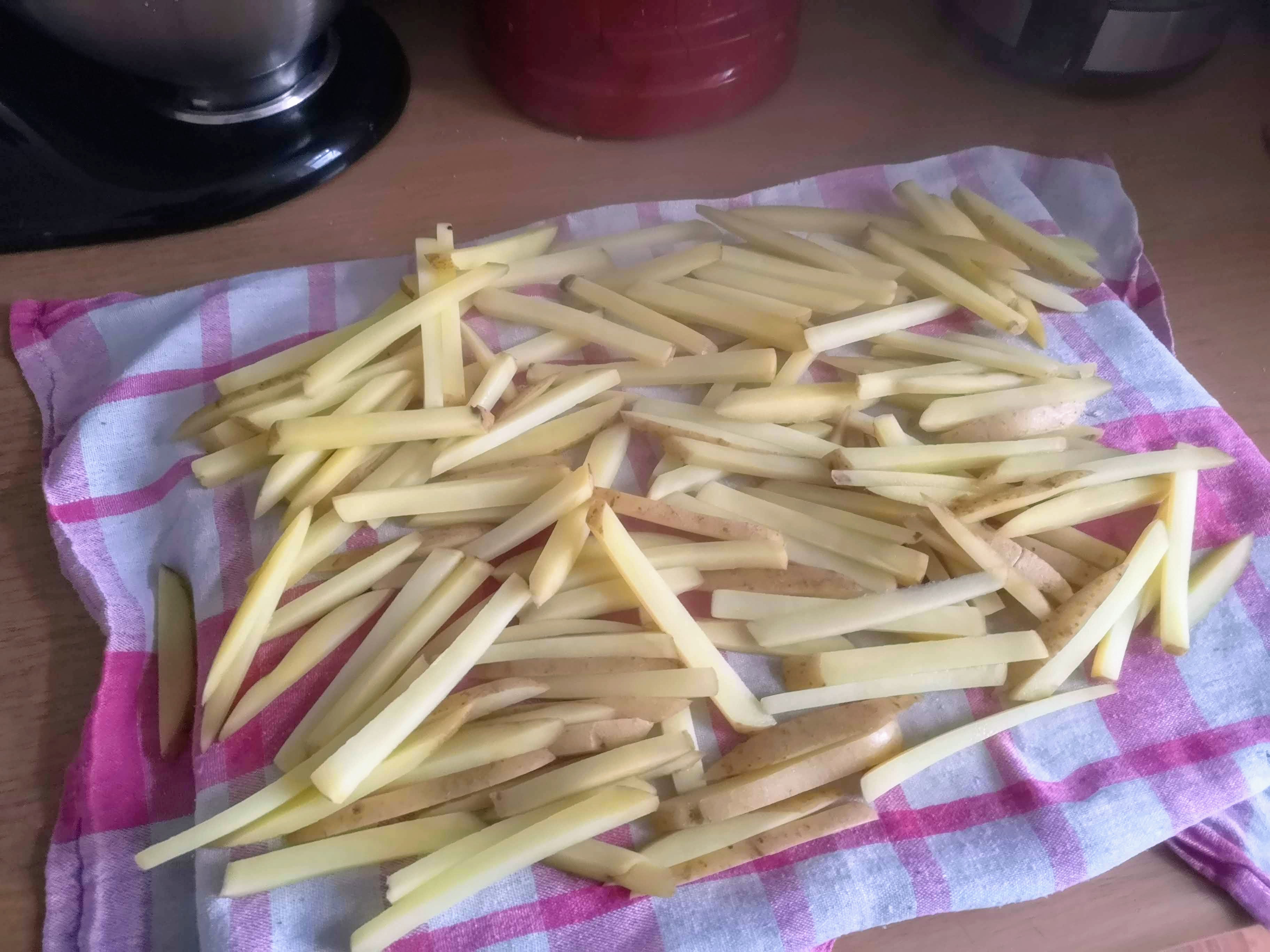
Step 2:
I use a thermometer to keep an eye on the beef tallow. When it hits 375f/190c, it’s ready to flash fry the potatoes.
I use a slotted spoon to drop the fries in a handful at a time. I make a single layer of fries in the hot fat and keep moving them as they fry with the slotted spoon. Mine end up taking almost three minutes to fry. You want them to just start taking on a yellowish color.
I remove the first batch to a paper towel-lined baking sheet to leech out the excess fat and fry up the second (and last) batch.
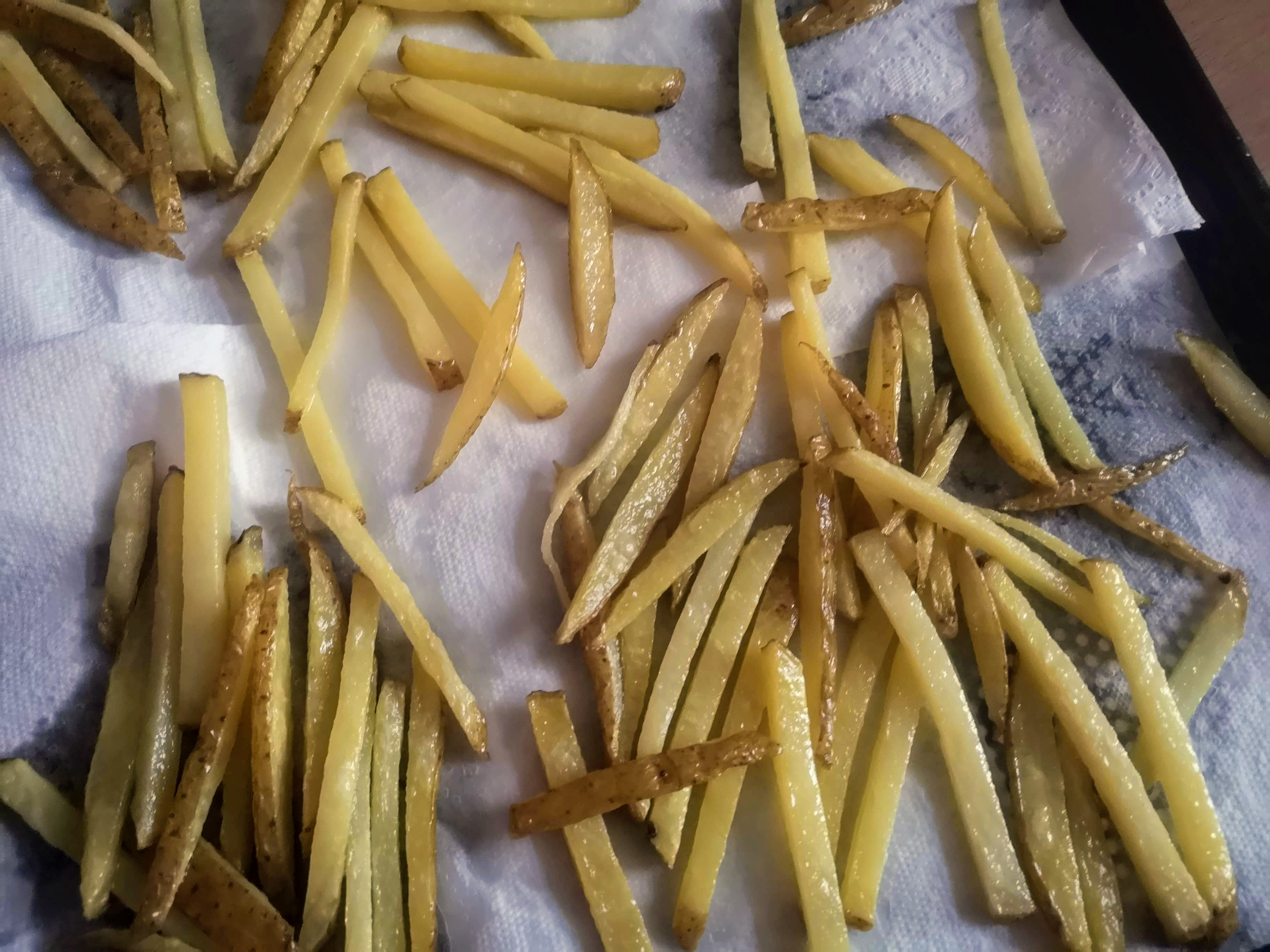
Again, it’ takes about three minutes to hit that yellowish color. The fries are cooked but they’re not crispy fries yet.
Step 3:
After I leech out as much of the excess fat as I can by gently tamping the fries with a paper towel, I place them in a freezer-safe container in as close to one layer as I can. Some recipes call for a single layer for freezing. That takes up a lot of freezer space most people don’t have. This way works fine too.
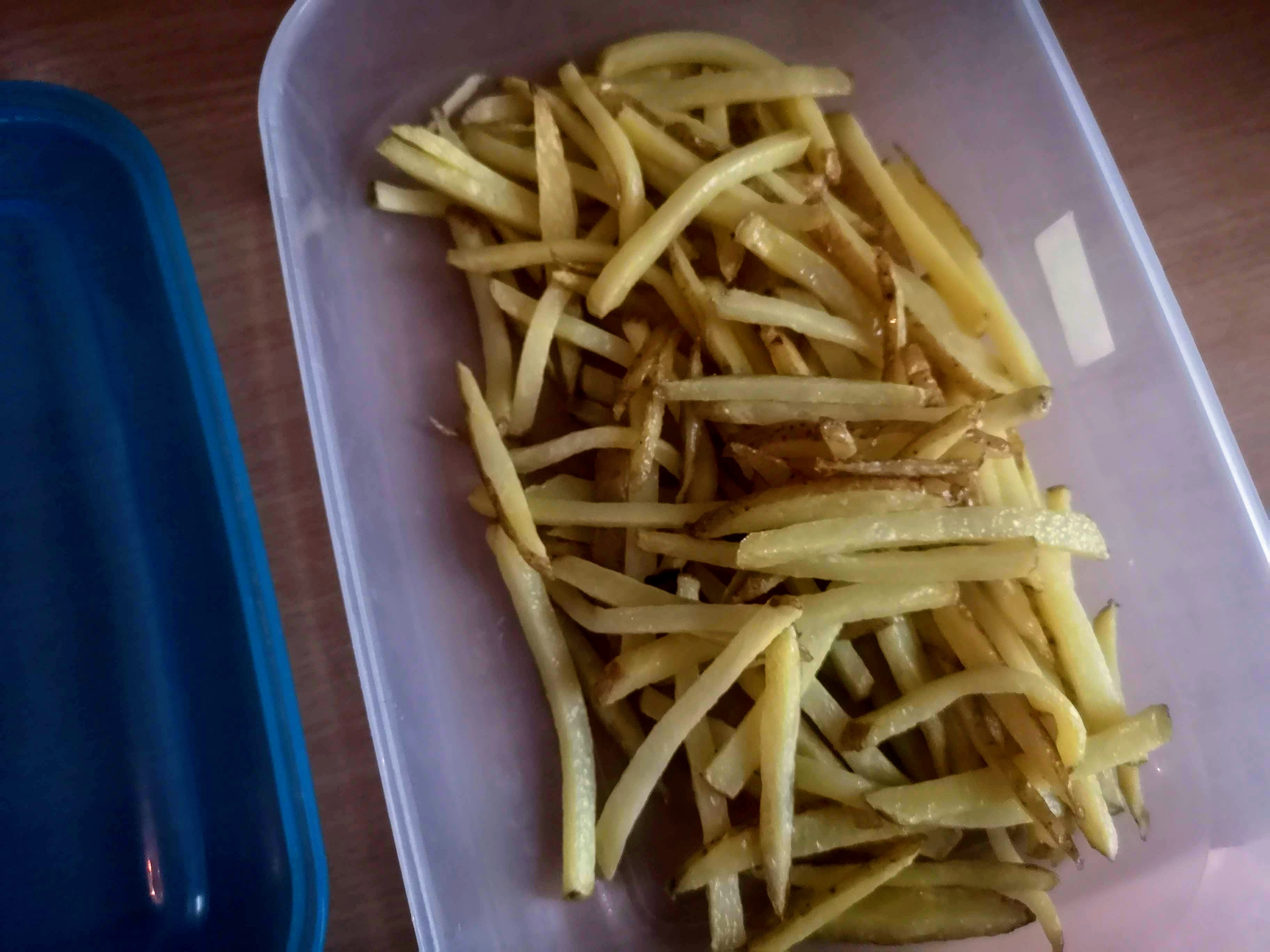
I then place the fries in the freezer for at least two hours or until the fries are frozen through. You can keep them for up to a month like this and pull them out in batches to fry up at will if you want.
Step 4:
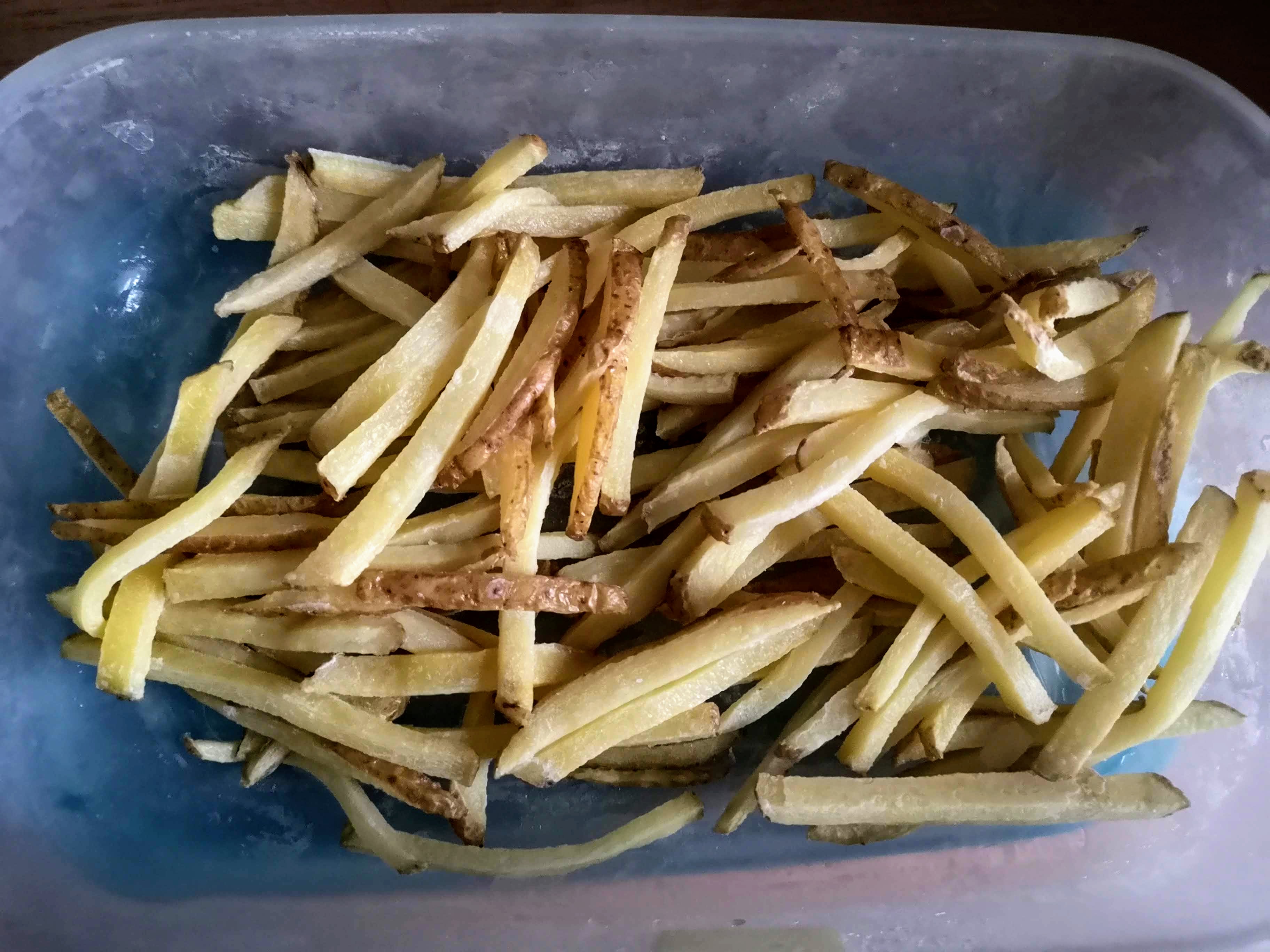
This is where the magic happens. I get the beef tallow up to 400f/205c to finish the fries.
Now, if you order a freshly fried order of fries from McDonald’s, it takes about three-and-a-half minutes to get those fries. So, I’m aiming for three minutes as my frying time.
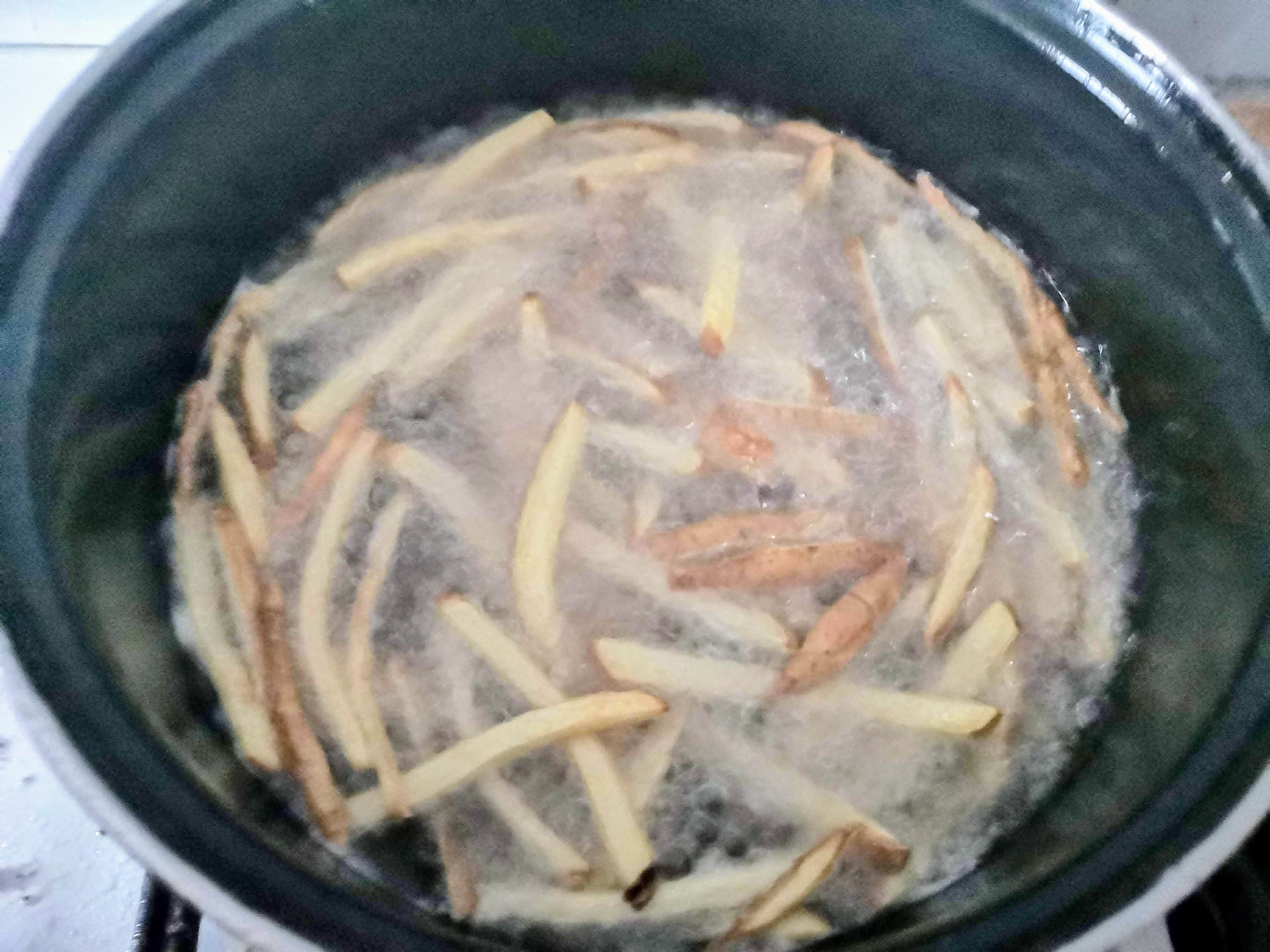
I drop the fries in and keep an eye on my temperature. I have to kick the flame up to get the tallow back up to temp as quickly as possible. I also use the slotted spoon to move them around a bit (basically emulating the basket shake of a professional frier).
After three minutes pass, I check the fries for doneness and they’re very done. They aren’t burnt but they also are not that lightly fried McDonald’s french fry either. Still, they’re super crispy and freakin’ delicious.
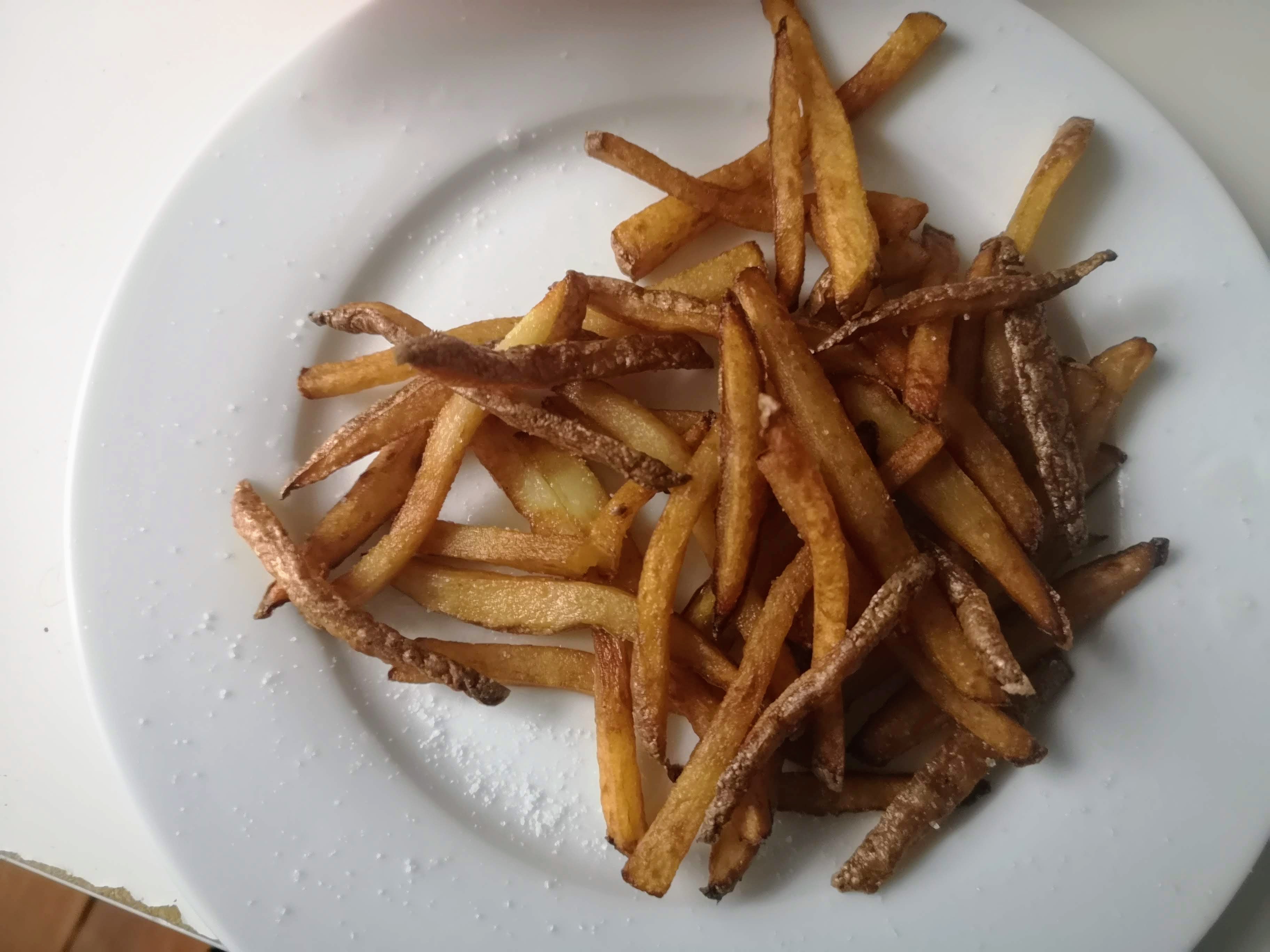
For the last batch, I fry for closer to two minutes before dropping them in the bowl and salting. The crispiness was there but the color was a bit closer to actual McDonald’s fries.
Bottom Line:
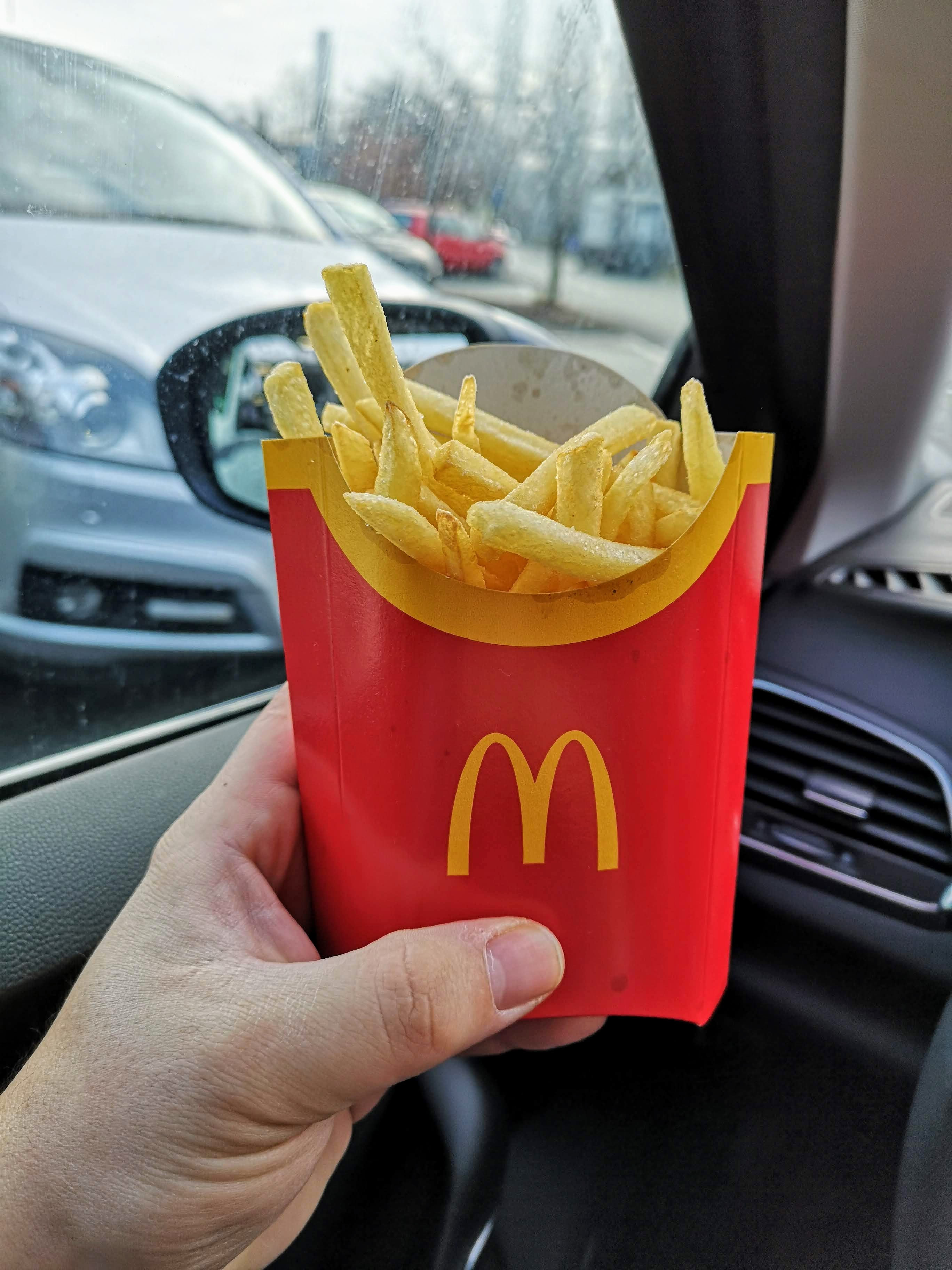
So, McDonald’s fries are McDonald’s fries. They’re crispy yet soft with plenty of salt. They’re delicious. These fries are also delicious. They’re fries after all. They did have that sweet edge with a beefiness for sure. But they really tasted like your average homemade fries. Okay, they were a little better than “average.” The beef tallow really shined through and made them very tasty.
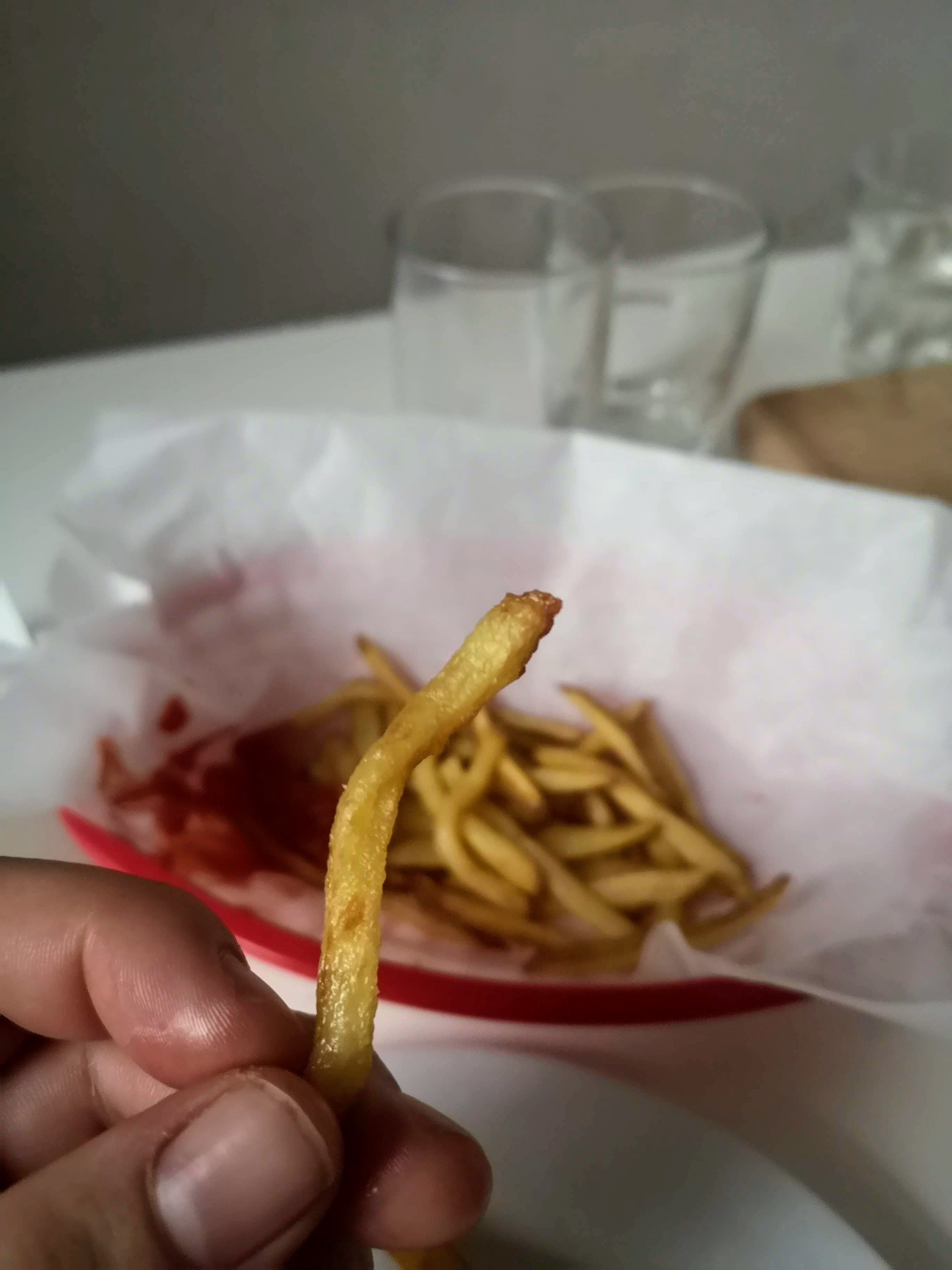
As you can see above, they look similar to McDonald’s fries and have a close texture and feel to them. Maybe if I fried 50 more batches in my beef tallow, it’d start to build up some deeper flavor/seasoning. But that’s never happening. That being said, I do think the vinegar and sugar brine/blanch added a nice touch to the overall fry.
I guess it comes down to this: These are delicious. But cooking them three times and freezing them in between is way too much work for a side you can get for $2 at any McDonald’s, beef tallow or not. There are easier/ more straightforward fry recipes that we like every bit as much.
Sure, you may still decide to make this one — just know that you’re doing it to feed your curiosity as much as your hunger.
